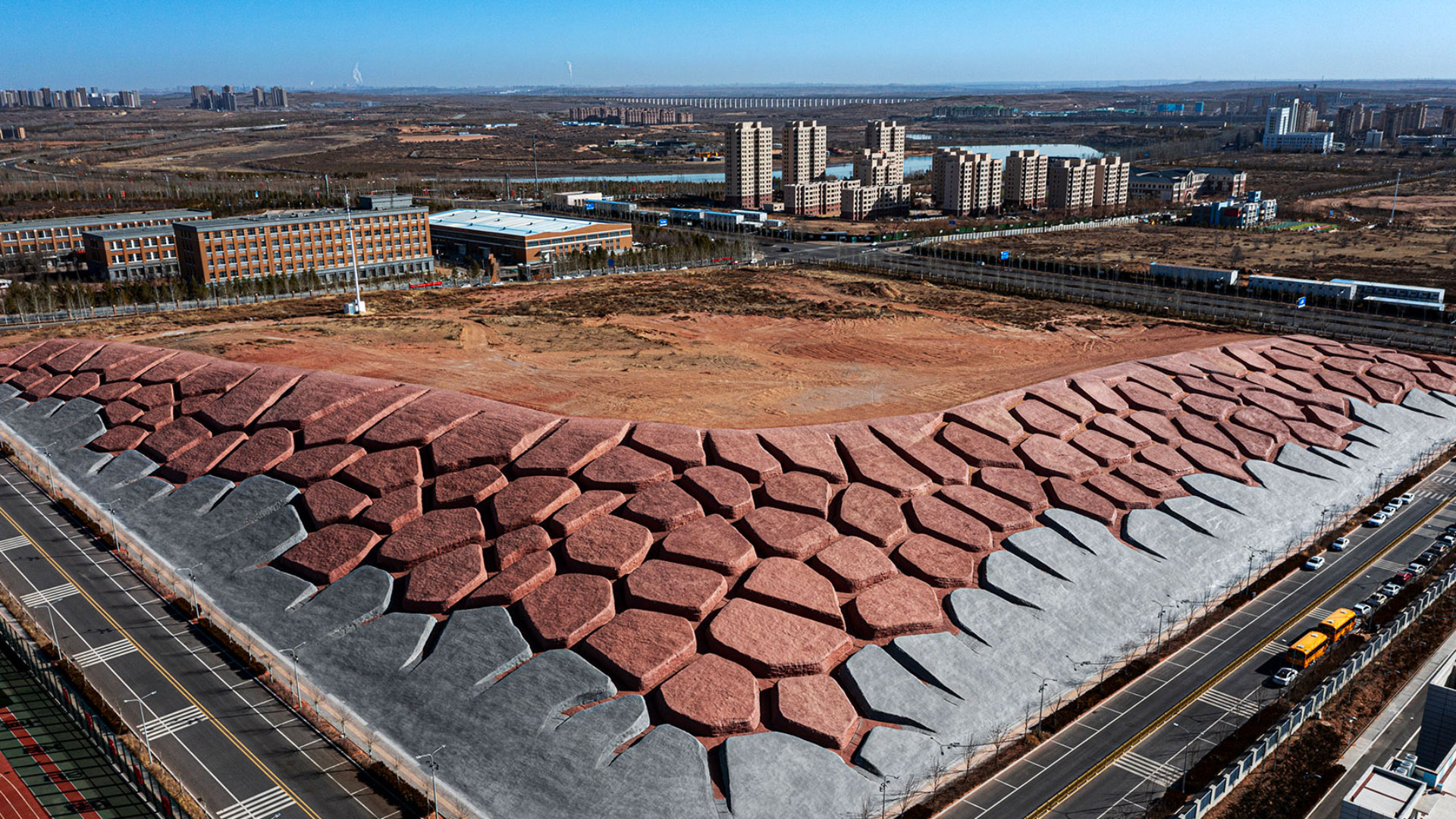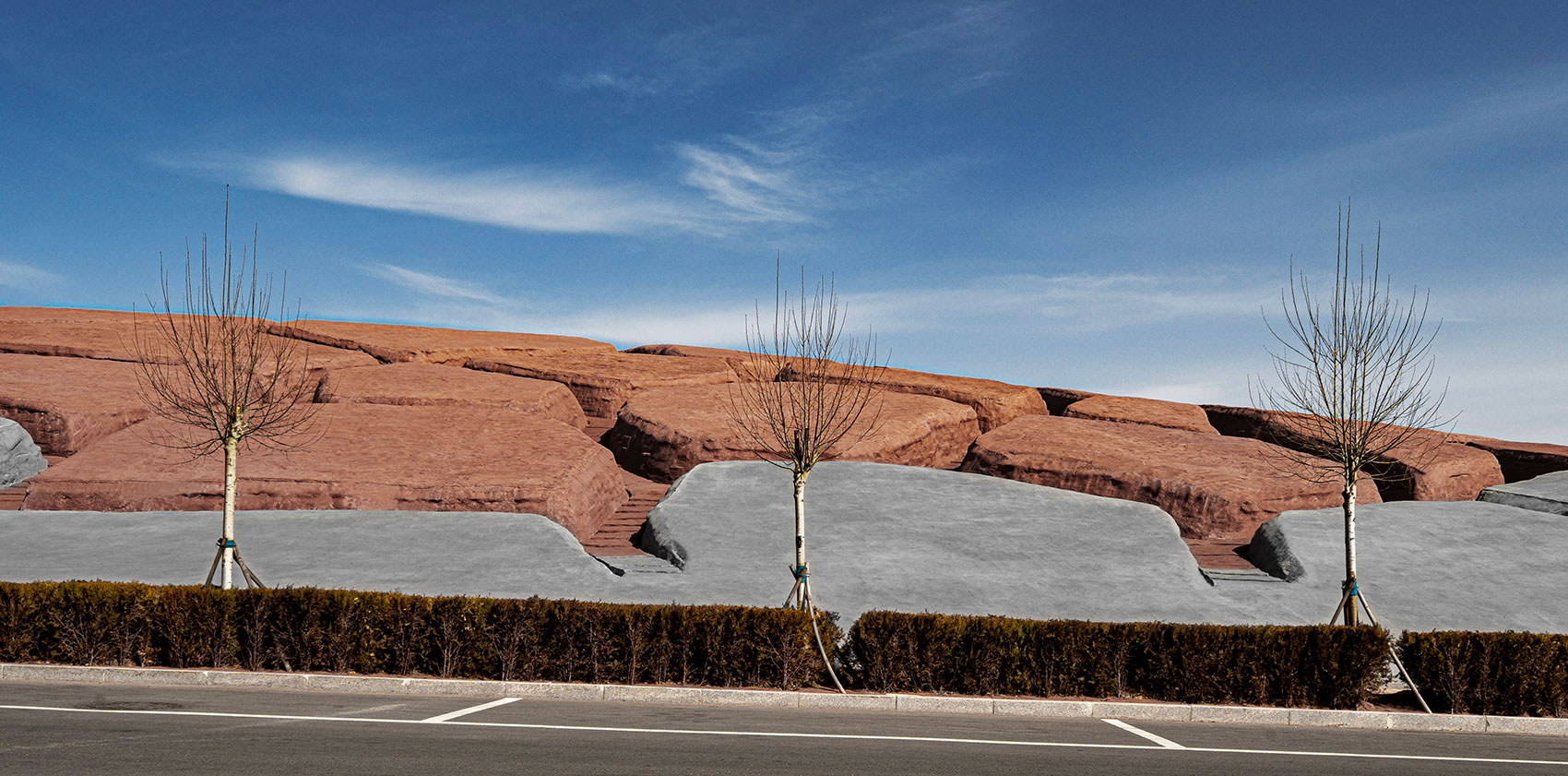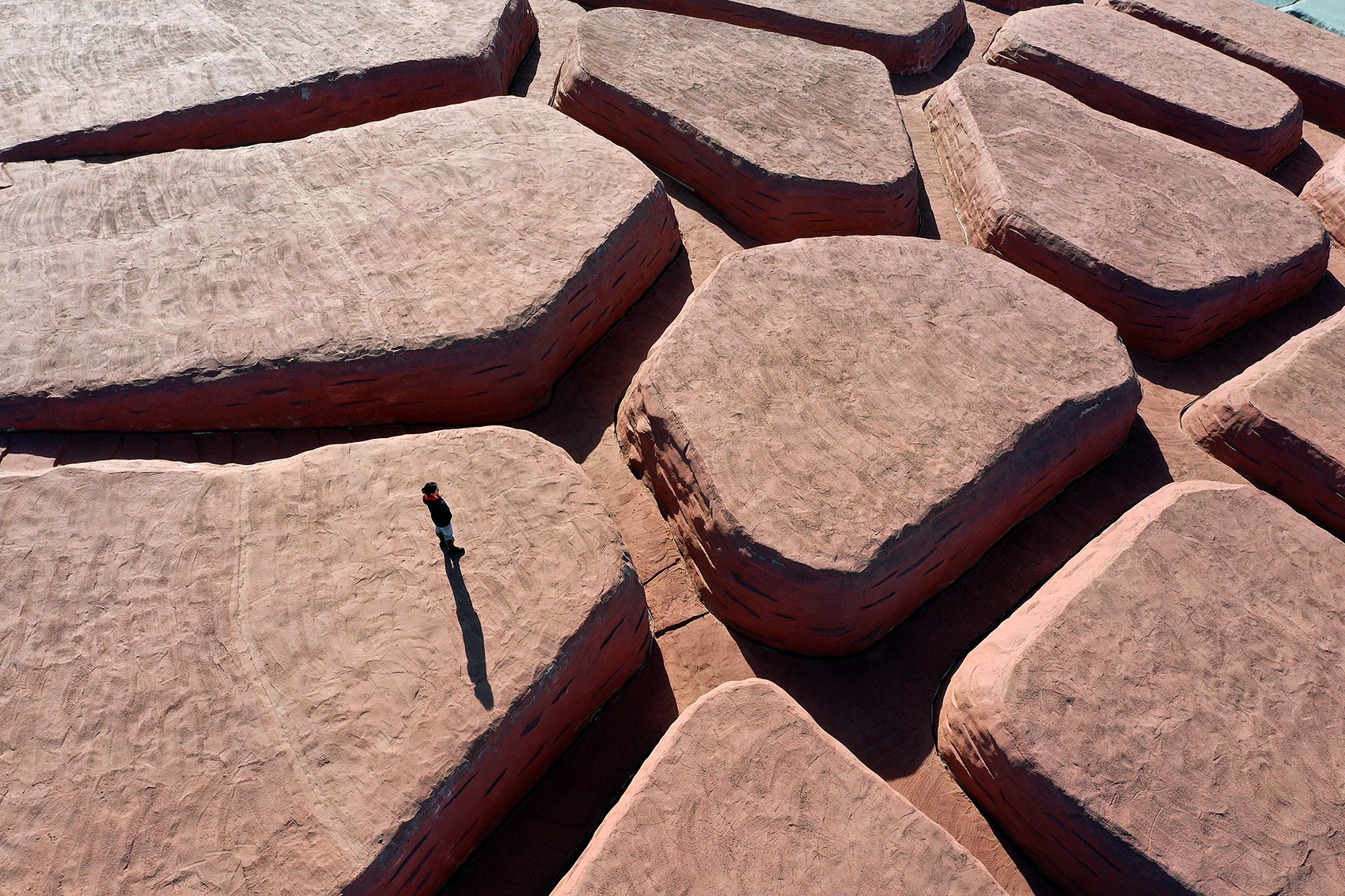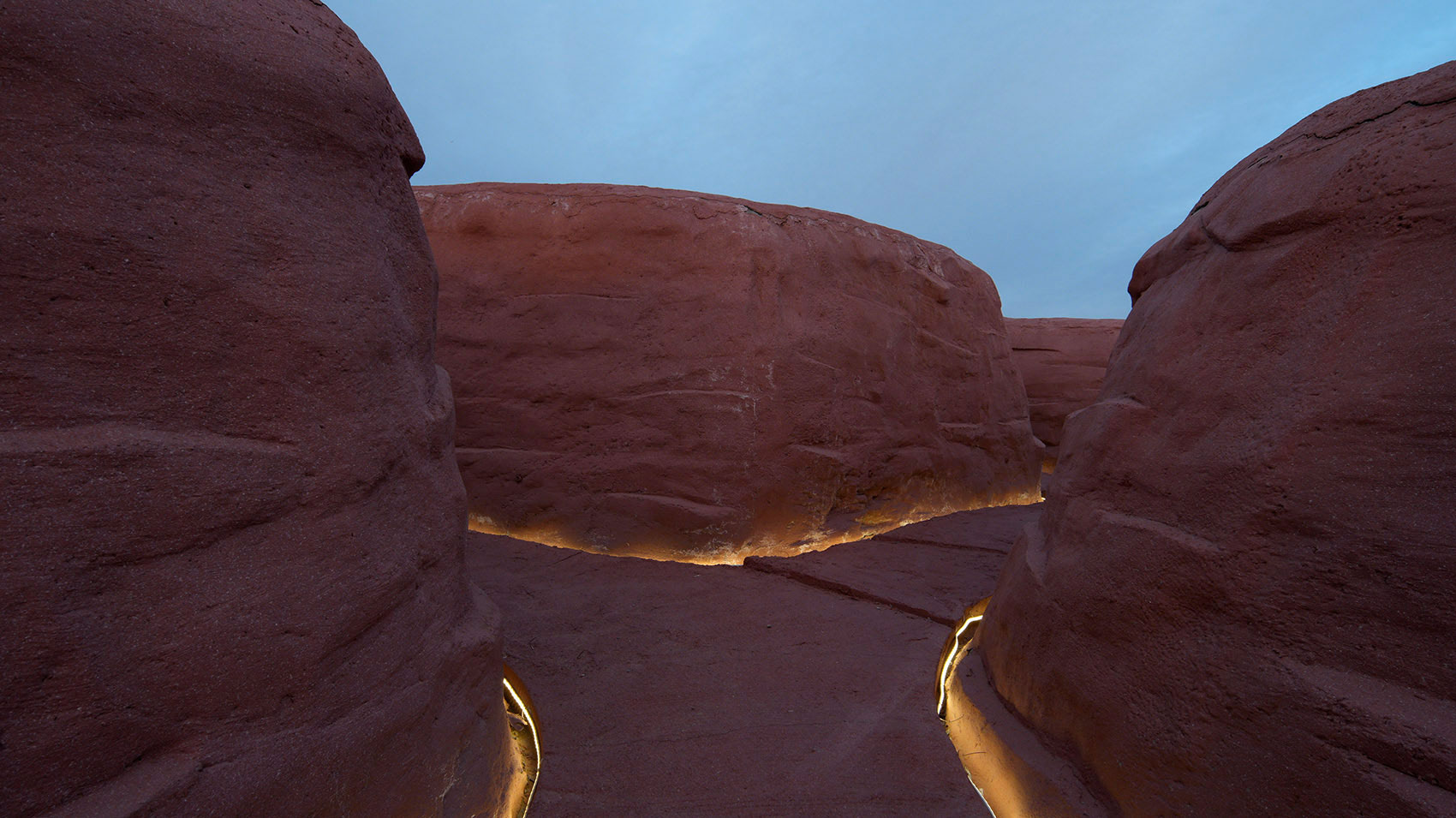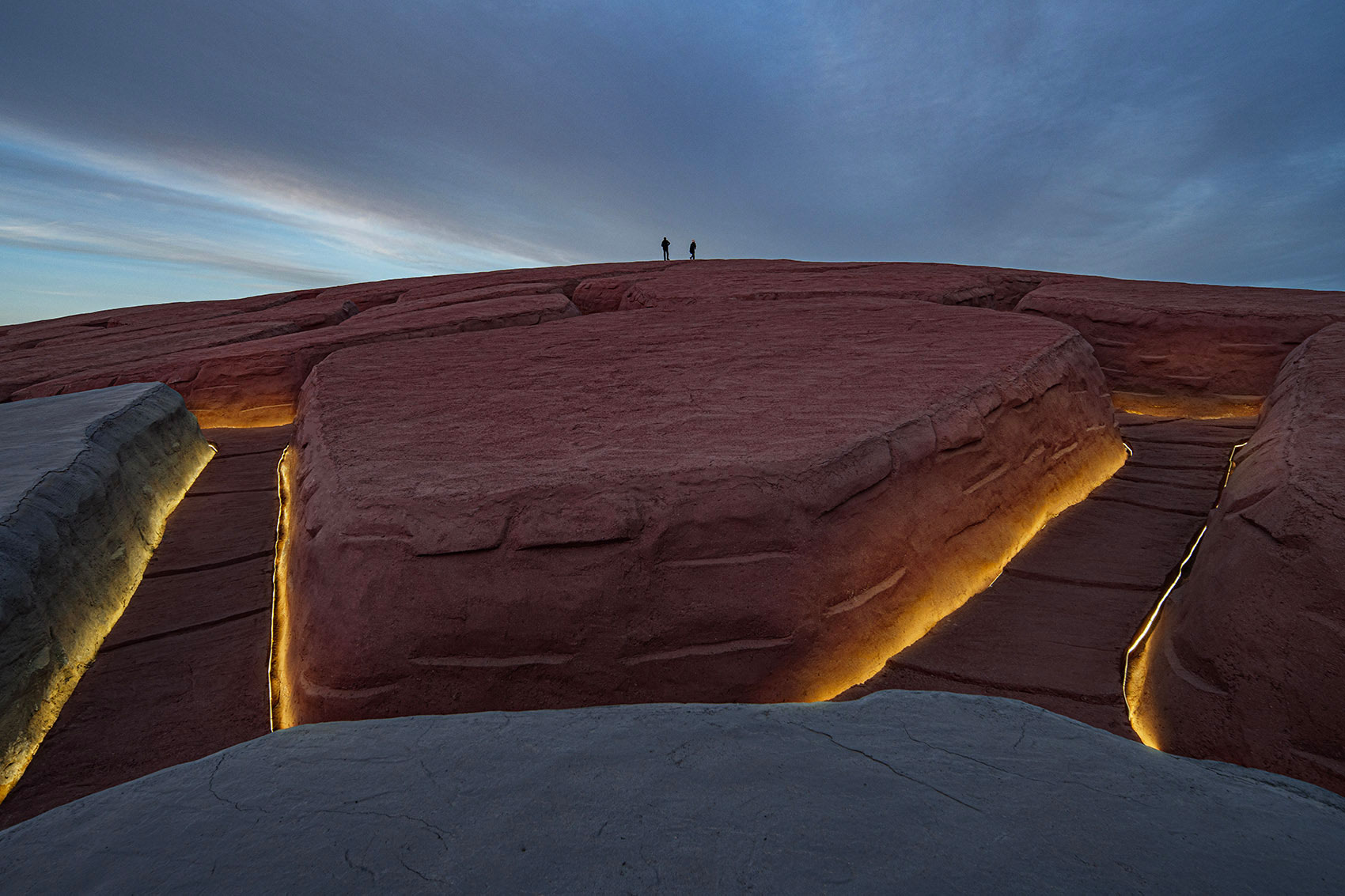Coordinates: China, Inner Mongolia, Ordos City, Kangbashi District. Setting: an urban area with a high density of schools and residential buildings. Project: experimental landscape intervention. Subjective attributes: extraterrestrial, almost Martian, surprising, unexpected, singular, mysterious, exceptional, primitive, unusual… We could go on with the attributes until the dictionary epithets are exhausted, although perhaps it is enough to point out that the project to which we dedicate this space converts a large plot of land and the natural slope on which it stands into a public space halfway between park, labyrinth, adventure area and promenade. It is the Kangbashi Path.
This landscaping project is a realisation of the architectural firm DAIKOSHA Architectural Design Consulting Co., Ltd. As we read in the design team’s statement, the project strives “to utilize the existing resources of the site, combine environmental characteristics, and make nature, sustainability, and national fitness as the core concepts”. From these principles, DAIKOSHA has produced a “large-scale landscape texture“, which they describe as “functional, evolving, participatory and high quality”. In addition, they say, it brings together “sports concepts” in order to provide citizens with “a rich, healthy and natural life experience“.
The unique landscaping of the Kangbashi Path, realised with “parameterised design methods“, is inspired by the shapes of magma as it emerges from underground and spreads over the surface. The 30,000 square metre site consists mainly of red sandstone and clay. DAIKOSHA gives a detailed description of the construction process:
- First, they carried out a surface cleaning, until the red sandstone was exposed.
- Then they dug trenches and pedestrian channels, both manually and with small excavators.
- To reinforce the red sandstone, they sprayed its surface with a magnesium fluorosilicate solution. After absorption of this solution, they used “WD-W02 organic silicon penetration reinforcement agent”. This preserved and strengthened the original appearance of the red sandstone.
- Subsequently, they used “colour-mixing concrete” to harden the surfaces.
- The final touch was the installation of waterproof, low-voltage linear LED strip lights to illuminate the passages and their intersections.
As its architects and designers put it, with this landscaping intervention, Kangbashi Path becomes “an interesting and participatory activity space open to the public“. Most of the heights here are taller than the average person and therefore block the view. As a result, we passers-by get a “sense of security” when we see ourselves within walls, literally immersed in the landscape almost as if it were a fluid. At the same time, we experience an unsettling anticipation of “the unknown ahead”.
You can enjoy new perspectives of the project via this VIDEO.
Source: Gooood.cn. Images: Hohhot Daliangzao Architectural Design Consulting Co., Ltd, vía Gooood.cn.


